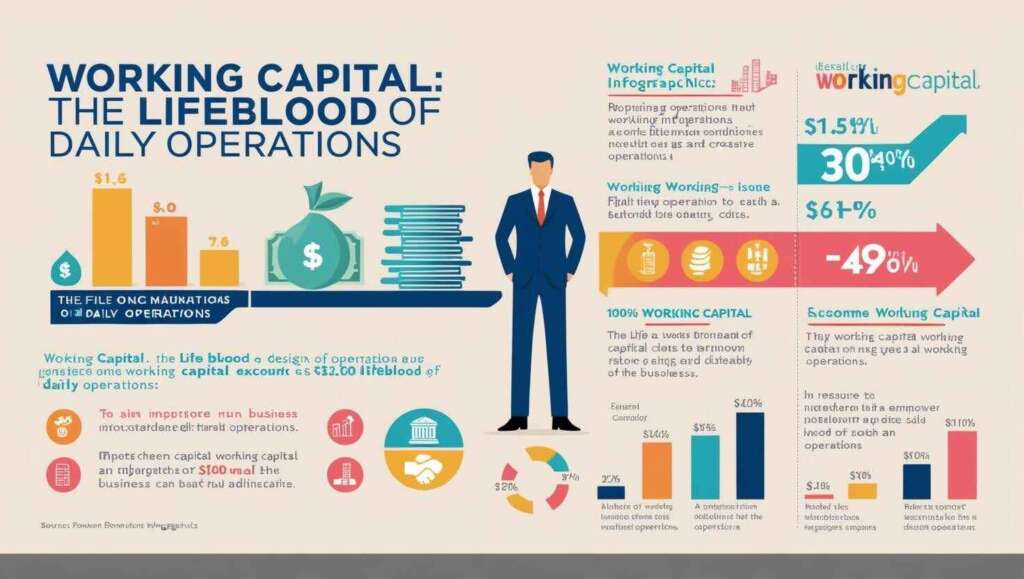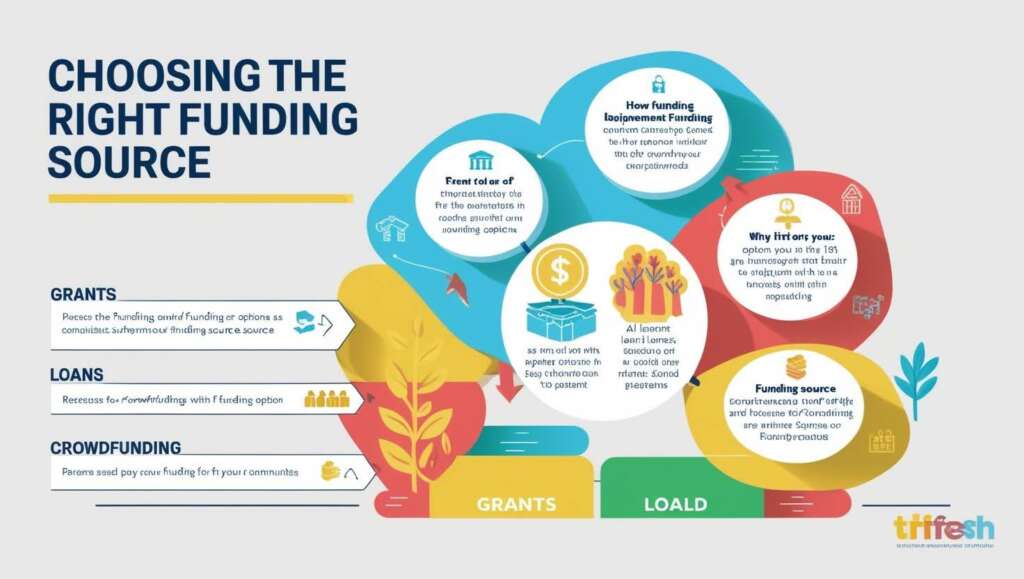Business capital is the lifeblood of any business, yet it’s often misunderstood. Whether you’re a seasoned entrepreneur or a first-time business owner, the idea of securing capital for your business can seem like navigating a maze. Despite its importance, many people still confuse business capital with just loans or believe that once you secure capital, the hard part is over. This article will explore common misconceptions about business capital, break down the types of capital available to business owners, and provide a clear path for avoiding pitfalls.
In this guide, we’ll explain what business capital really means, the different types of capital businesses typically use, and why it’s vital to choose the right funding strategy for your company’s needs. We’ll also walk you through common mistakes entrepreneurs make when securing funding and how you can avoid them. If you’re looking to understand business capital on a deeper level and avoid making costly errors, you’re in the right place.
Introduction to Business Capital
Understanding business capital is essential for entrepreneurs looking to grow or sustain their business. In its simplest form, business capital refers to the money that a business uses to operate, expand, and cover any unexpected expenses. But this broad term encompasses a variety of financing options, including loans, equity, and working capital, each serving a distinct purpose.
Defining Business Capital
Business capital is the foundation that allows businesses to function, pay employees, invest in equipment, and execute growth strategies. It’s often divided into different categories depending on how it is used. Working capital, for example, ensures daily operations run smoothly, while growth capital is used to scale the business, invest in new projects, or expand operations. Equity capital refers to the money you get from investors in exchange for ownership stakes in your company. Lastly, debt capital is when you borrow funds, typically through loans, which you need to pay back with interest.
Understanding the importance of each type of capital and how it fits into your business’s financial strategy is essential. While all these forms of capital are vital, the wrong type of capital at the wrong time can create more harm than good. For instance, relying heavily on debt financing can put your company at risk, while ignoring equity financing could limit your growth potential.
Common Misconceptions About Capital
One of the most common misunderstandings about business capital is that it’s only about loans. Many entrepreneurs think they need to take on significant debt to get their businesses off the ground. However, this view overlooks other, equally valid options, such as equity financing (seeking investors) or bootstrapping (self-financing the business).
Another misconception is that once you secure capital, your business is set. This is a dangerous assumption. Even with plenty of capital, poor financial planning or a lack of strategy can quickly lead to failure. Additionally, not all capital is created equal—what works for one business might not work for another.
Key Takeaway: Business capital isn’t a one-size-fits-all solution. To succeed, entrepreneurs must carefully consider what type of capital aligns with their specific needs, stage of business, and long-term goals.
The Different Types of Business Capital
When most people think of business capital, they imagine a bank loan. While debt is a major form of capital, it’s just one of several options. Each type of capital serves a unique purpose in a business’s financial ecosystem, and understanding these differences can help you make the right choice.
Debt Capital: The Loan Option
Debt capital is one of the most straightforward ways to fund a business. It involves borrowing money from a lender (such as a bank or private lender) with an agreement to repay it over time, typically with interest. The main appeal of debt capital is that it doesn’t require you to give up ownership in your business, unlike equity financing. You borrow the funds, and then you’re responsible for paying them back.
However, the risks associated with debt are significant. If you’re unable to repay the loan, your business could face legal consequences, including potential bankruptcy. Moreover, debt financing often comes with strict repayment schedules, which could strain your cash flow.
Pros of Debt Financing:
- No loss of ownership: You maintain full control of your business.
- Tax benefits: Interest payments are often tax-deductible.
Cons of Debt Financing:
- Repayment burden: Fixed repayments can limit cash flow.
- High interest: If you have poor credit, loans can be expensive.
Equity Capital: Selling a Stake in Your Business
Equity financing involves raising funds by selling ownership stakes in your business, typically to investors such as venture capitalists, angel investors, or even crowdfunding platforms. In exchange for their capital, investors get a share of ownership and a say in the company’s management or direction.
The primary advantage of equity financing is that you don’t need to repay the funds like you would with a loan. Instead, investors receive a return on their investment through dividends or the sale of their stake when the company grows. However, the main downside is that you give up a percentage of ownership and, in many cases, control over business decisions.
Pros of Equity Financing:
- No repayment pressure: Unlike loans, you don’t have to pay investors back.
- Shared risk: Investors share the risks, which can ease financial pressure on your business.
Cons of Equity Financing:
- Loss of control: Investors typically want to have a say in the business’s direction.
- Profit-sharing: You’ll need to share profits with investors.
Working Capital: The Lifeblood of Daily Operations

Working capital is the money you use to cover the day-to-day costs of running your business, such as paying employees, purchasing inventory, and managing overhead expenses. Having sufficient working capital ensures that your business can meet short-term financial obligations without hiccups.
It’s essential to keep your working capital at healthy levels because if it dips too low, your business could face liquidity problems, even if it’s profitable. Many businesses secure short-term loans or lines of credit to maintain a steady stream of working capital when cash flow is tight.
Pros of Working Capital:
- Liquidity: Ensures your business has enough cash to keep operating.
- Flexibility: Helps manage unforeseen costs and seasonal fluctuations.
Cons of Working Capital:
- Short-term focus: It’s a reactive form of capital, addressing immediate needs but not supporting long-term growth.
Key Takeaway: While debt and equity capital are often focused on growth, working capital is crucial for ensuring smooth daily operations. Balancing the three types of capital can provide stability and foster growth.
How to Avoid These Common Pitfalls
Now that we’ve explored the types of business capital and the common mistakes entrepreneurs make, it’s time to focus on how you can avoid these pitfalls. Whether you’re just starting or looking to secure additional funding, knowing how to manage capital properly can prevent financial stress and set your business on a path to long-term success.
Assess Your Business’s Needs
The first step in avoiding capital-related mistakes is understanding what your business needs. Do you need a loan to cover operational expenses? Or are you looking to raise funds to scale your business through equity financing? Many entrepreneurs rush to secure capital without clearly defining their needs, which leads to poor decision-making.
Financial forecasting is a crucial tool in this process. By predicting your business’s future income, expenses, and cash flow, you’ll have a better understanding of how much capital you need and when to acquire it. This proactive approach can prevent you from over-leveraging your business or selling more equity than necessary.
For example, if you’re running a small startup with limited resources, equity financing might be more suitable because it doesn’t add to your debt burden. On the other hand, if your business already has a steady income stream and is looking for growth opportunities, debt financing could work better, as it allows you to retain full control of your company.
Choose the Right Funding Source

Choosing the wrong source of capital can be disastrous. Many businesses that start out with debt financing quickly find themselves overwhelmed with high interest and repayment schedules. Others that rely too heavily on equity financing may give up too much control too soon.
Consider your business’s stage and industry when choosing between debt or equity. Early-stage businesses might be better suited for equity financing because it allows them to secure funds without worrying about repayments right away. However, if your business is established and generating steady cash flow, debt financing could be a more affordable option that allows you to retain ownership.
Additionally, evaluate the potential costs and terms of each type of financing. While equity capital may seem appealing because it doesn’t require repayments, it may lead to ownership dilution and loss of control. Debt capital, while giving you full control, often comes with higher interest rates, especially if your business is seen as a riskier investment.
Planning for the Long-Term
One of the most critical aspects of securing capital is long-term planning. Many entrepreneurs focus solely on the short-term needs of their business, neglecting to consider how their capital choices will affect their business’s future.
A business should not only plan for its current funding needs but also forecast future capital requirements. If your business is growing rapidly, you may need additional capital to support expansion. If you’re entering a new market, you may need a combination of working capital and long-term growth financing.
To prepare for the future, consider developing a capital strategy that aligns with your business goals. Understand how each type of capital will support your vision for the next 3, 5, or even 10 years. Additionally, it’s essential to have a backup plan in case your primary source of capital becomes unavailable, whether due to changes in the financial market or internal issues within the company.
Key Takeaway: The key to avoiding pitfalls is to assess your needs, choose the right funding source, and plan ahead for both short-term and long-term goals. Proper capital planning ensures you maintain control while fueling your business’s growth.
Case Studies: Business Capital Done Right
Case studies are invaluable in demonstrating how businesses have successfully leveraged capital to fuel their growth. In this section, we’ll look at a few examples of companies that have navigated the complexities of capital and come out on top.
Successful Stories of Debt Capital
One prime example of a company that used debt capital effectively is Home Depot. In its early days, the home improvement giant took out significant loans to finance inventory and expand its network of stores. The company was able to repay the loans quickly due to its steady revenue stream, avoiding any long-term strain on its financials. Today, Home Depot is one of the largest home improvement retailers in the world, demonstrating how debt capital can be used as a strategic tool for growth when managed properly.
Another example is Tesla. Initially, Tesla used debt financing to cover the costs of producing its vehicles and scaling operations. Through careful management and innovation, the company was able to repay its debt while building one of the most successful electric car brands globally.
Success with Equity Financing
Amazon is a prime example of a company that thrived through equity financing. In the late 1990s, Amazon raised capital through various rounds of funding from venture capitalists, allowing it to scale rapidly and establish itself as a dominant player in e-commerce. The funds raised through equity allowed Amazon to reinvest in its infrastructure, technology, and customer service, which was key to its early success. Today, Amazon is a trillion-dollar company, and the investors who funded it early on reaped significant returns.
How Strategic Working Capital Management Led to Growth
Another example of capital done right is Coca-Cola. Through careful management of its working capital, Coca-Cola was able to continue operations efficiently even during challenging economic periods. By maintaining a healthy balance of cash flow, inventory, and receivables, the company was able to meet its operational expenses without needing to secure additional loans or equity financing.
Key Takeaway: Successful companies have used a combination of debt, equity, and working capital management to fuel their growth. Each type of capital has its role, and when used strategically, they can set businesses on a path to success.
Conclusion: The Importance of Understanding Business Capital
In conclusion, business capital is more than just a financial tool—it’s a crucial component that determines how well a business can operate, grow, and manage risks. Understanding the different types of capital, the common misconceptions surrounding it, and the best strategies for securing and managing it are all essential for business success.
As we’ve seen through case studies and examples, businesses that use capital wisely and avoid common mistakes are better positioned to achieve long-term success. So, whether you’re just starting out or looking to grow your existing business, take the time to evaluate your capital needs, choose the right funding source, and plan for the future.
Key Takeaway: A thorough understanding of business capital is essential for making informed decisions that will keep your business financially healthy and poised for growth.
FAQs
1. What is the best type of business capital for a startup?
The best type depends on your business needs. Bootstrapping is ideal for control, while equity financing suits high-growth startups, and debt works for stable revenue models.
2. How do I know if I should seek debt or equity financing?
Choose debt if you can repay with steady revenue; choose equity if you prefer sharing ownership to reduce risk.
3. Can I use working capital to grow my business?
Yes, but ensure it doesn’t harm daily operations. Invest in quick-return areas like marketing or inventory.
4. What are the tax benefits of using debt capital?
Interest on debt is tax-deductible, reducing taxable income and overall tax burden.
5. How can I manage my working capital effectively to avoid liquidity problems?
Monitor cash flow, optimize inventory, speed up receivables, and control expenses to maintain liquidity.

